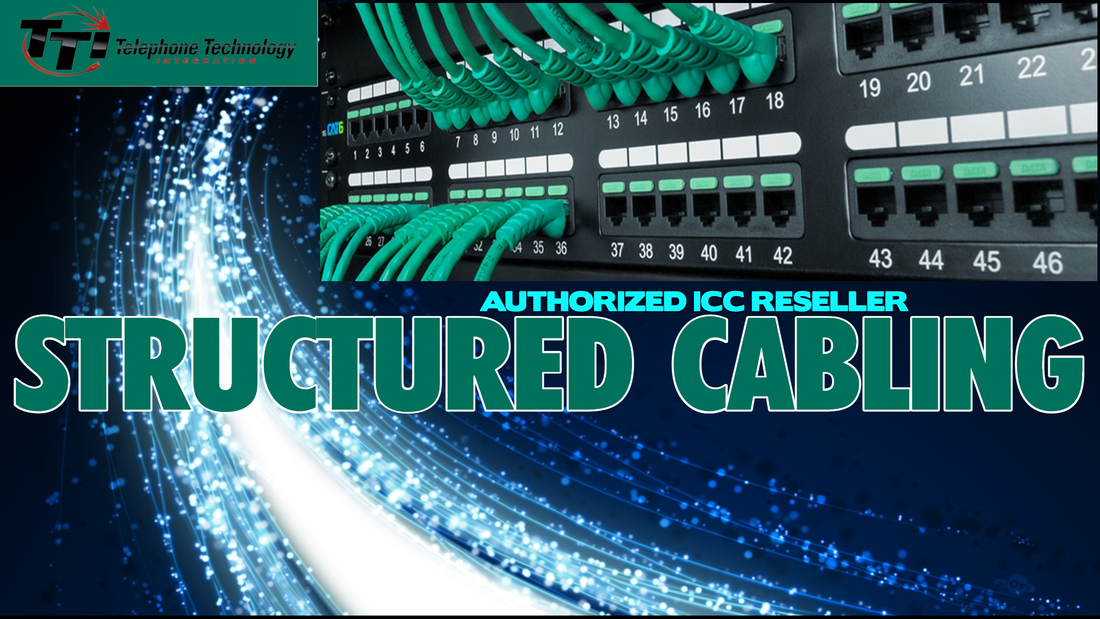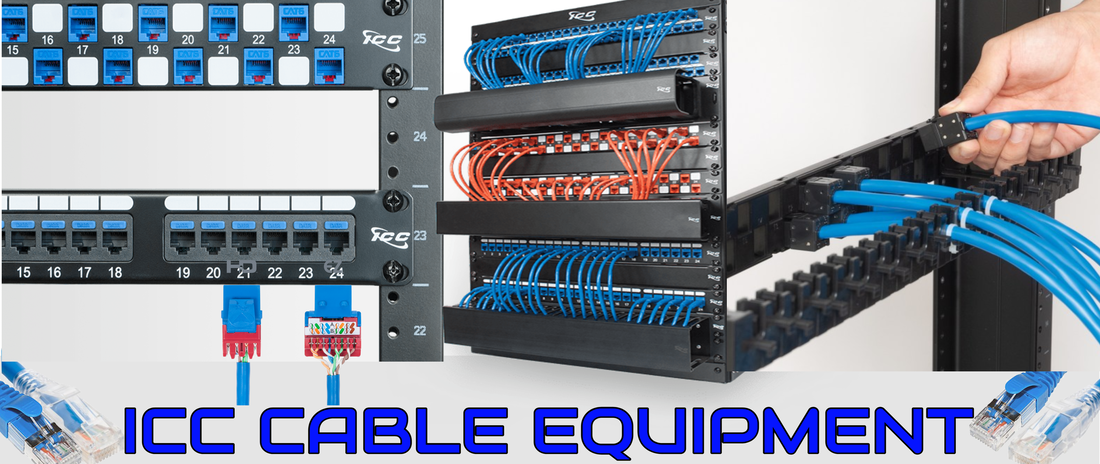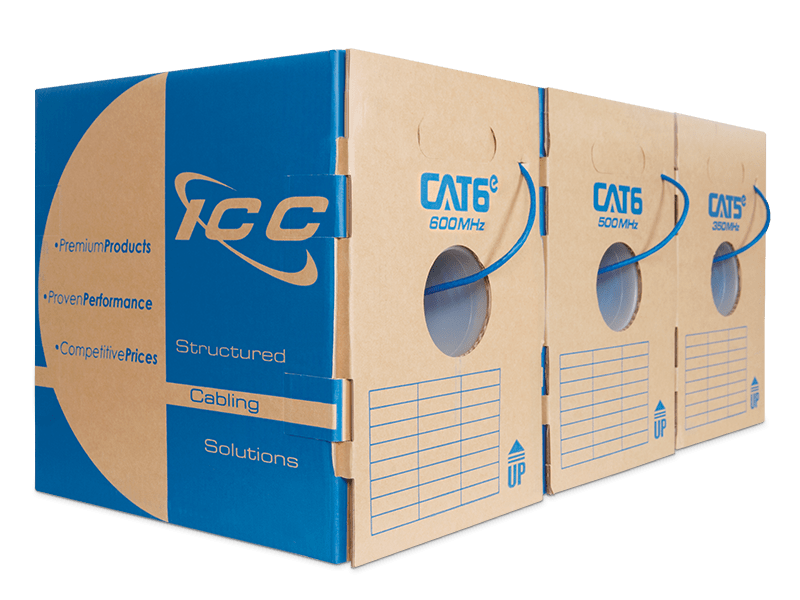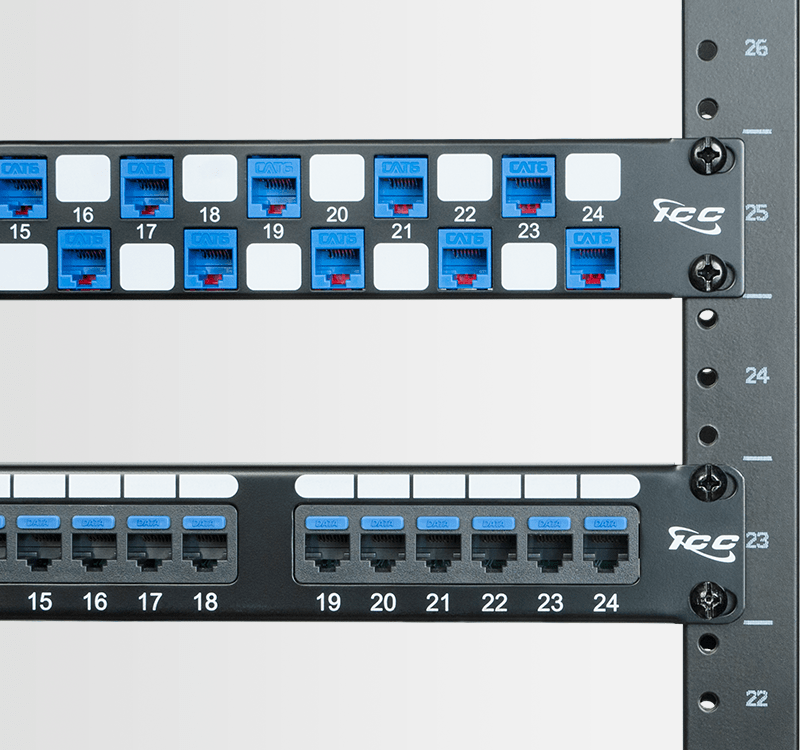Structured Cabling & Management Services
When an Authorized ICC Reseller installs your Cable Management System you get a 15 Year Warranty to backup your investment. This covers all ICC equipment from Cable, Jacks, Faceplates, Patch Cords and all ICC Products installed during your project. In order to qualify the project must be worth over 10K in hardware. Telephone Technology Integration, LLC has been an Authorized ICC Reseller and Installer for over a decade.
Compare: CAT5e - CAT6 - CAT6e - CAT6a
Bandwidth Cat5e and Cat6 cables both support speeds of up to 1,000 Mbps, which is sufficient for most internet connections, but the main difference is in the bandwidth.
Higher bandwidth means faster data transfer, and Cat6 cables operate on frequencies up to 250 MHz, compared to the Cat5e’s 100 MHz support.
You can think of it like a two and four-lane highway: you drive the same speed on both, but the 4-lane road handles much more traffic in the same amount of time.
Standard Cable Maximum Speed and Maximum Bandwidth
Higher bandwidth means faster data transfer, and Cat6 cables operate on frequencies up to 250 MHz, compared to the Cat5e’s 100 MHz support.
You can think of it like a two and four-lane highway: you drive the same speed on both, but the 4-lane road handles much more traffic in the same amount of time.
Standard Cable Maximum Speed and Maximum Bandwidth
- CAT5 100 Mbps 11 MHz
- CAT5e 1,000 Mbps 100 MHz
- CAT6 1,000 Mbps 250 MHz
- CAT6a 10,000 Mbps 500 MHz
- ICC CAT5e = 350 MHz vs Standard 250 MHz
- ICC CAT6 = 500 MHz vs Standard 250 MHz
- ICC CAT6e = 600 MHz vs Standard 250 MHz
- ICC CAT6a = 650 MHz vs Standard 500 MHz
- ICC CAT6 Patch cords offer CAT6e Speeds
|
Copper Cabling Systems
TTI offers a complete solution for installing copper structured cabling systems. Choose from a wide selection of bulk cable, keystone jacks, patch panels, and patch cords. Installers can design and build-out the cabling system from end-to-end to TIA permanent link and channel specifications. ICC’s cabling system supports small businesses, large enterprises, and data centers. ICC also offers a 15-year or Lifetime Performance Warranty through its network of Elite and Certified Elite Installers.
|
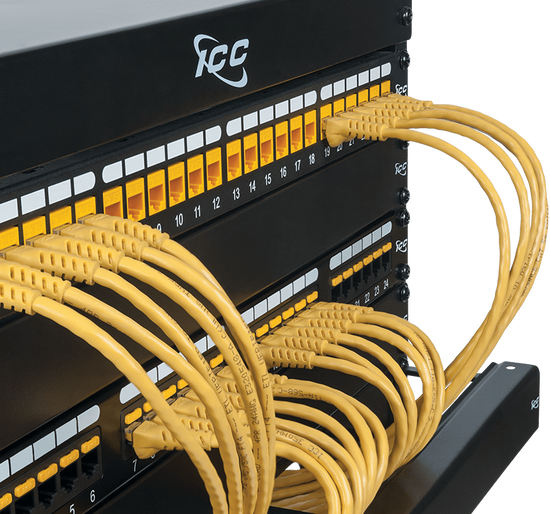
No Compatibility Issues
ICC Premise Cables, Keystone Jacks and Patch Panels are fine-tuned to work together and achieve the highest power-sum near-end crosstalk (PSNEXT) and far-end crosstalk (FEXT) cancellation performances. PSNEXT and FEXT help the cabling system omit interference, provides balance to reject noise and emissions, decreases return loss to reduce signal reflections, and low attenuation to ensure strong signal transmission.
ICC Premise Cables, Keystone Jacks and Patch Panels are fine-tuned to work together and achieve the highest power-sum near-end crosstalk (PSNEXT) and far-end crosstalk (FEXT) cancellation performances. PSNEXT and FEXT help the cabling system omit interference, provides balance to reject noise and emissions, decreases return loss to reduce signal reflections, and low attenuation to ensure strong signal transmission.
Cable Infrastructure
CMR vs. CMP
When choosing cable for your office you will have to know the difference between CMR (Non Plenum) and CMP (Plenum) Cables. CMR cables cost far less then CMP and in most indoor environments in the East Coast Plenum rated cable is required by law.
When choosing cable for your office you will have to know the difference between CMR (Non Plenum) and CMP (Plenum) Cables. CMR cables cost far less then CMP and in most indoor environments in the East Coast Plenum rated cable is required by law.
Supports Emerging Technologies
ICC’s Ethernet cabling systems support common applications as well as emerging technologies, such as Power over Ethernet (PoE), Voice over IP (VoIP), and 10 Gigabit Ethernet (10GbE) and more.
Category 5e (CAT5e): currently defined in TIA/EIA-568-C.2 for networks up to 100 MHz, is used for 100 Mbit/s Ethernet networks. This category of products is commonly used for VoIP applications.
Category 6 (CAT6): currently defined in TIA/EIA-568-C.2 for networks up to 250 MHz, more than double category 5e. This category of products is commonly used for 1000BASE-T Gigabit Ethernet networks. CAT6 cable is highly recommended for Power of Ethernet (PoE) and Audio/Video (AV) application. The tighter specifications guarantee the 100-meter runs of Category 6 are capable of 1000 Mbit transfer speeds. By utilizing CAT6 over CAT5e you avoid less chances of Crosstalk.
Category 6A (CAT6A): currently defined in ANSI/TIA/EIA-568-C.2 for networks up to 500 MHz, double that of category 6. This category of products is commonly used for 10GBase-T networks.
Category 6e (CAT6e): CAT6e: is an augmented specification of CAT6. It is designed to double the frequency from 250 MHz to 600 MHz. There is no standard for CAT6e that is recognized by the TIA like there is for the CAT6 and CAT5e. ICC introduced the CAT6e cable as a premium offering to CAT6, just like most bulk cable manufacturers. In addition, CAT6e cable with grounded foil shielding can reach 10-Gigabit Ethernet speeds without having to reduce the maximum length of 100 meters.
Category 5e (CAT5e): currently defined in TIA/EIA-568-C.2 for networks up to 100 MHz, is used for 100 Mbit/s Ethernet networks. This category of products is commonly used for VoIP applications.
Category 6 (CAT6): currently defined in TIA/EIA-568-C.2 for networks up to 250 MHz, more than double category 5e. This category of products is commonly used for 1000BASE-T Gigabit Ethernet networks. CAT6 cable is highly recommended for Power of Ethernet (PoE) and Audio/Video (AV) application. The tighter specifications guarantee the 100-meter runs of Category 6 are capable of 1000 Mbit transfer speeds. By utilizing CAT6 over CAT5e you avoid less chances of Crosstalk.
Category 6A (CAT6A): currently defined in ANSI/TIA/EIA-568-C.2 for networks up to 500 MHz, double that of category 6. This category of products is commonly used for 10GBase-T networks.
Category 6e (CAT6e): CAT6e: is an augmented specification of CAT6. It is designed to double the frequency from 250 MHz to 600 MHz. There is no standard for CAT6e that is recognized by the TIA like there is for the CAT6 and CAT5e. ICC introduced the CAT6e cable as a premium offering to CAT6, just like most bulk cable manufacturers. In addition, CAT6e cable with grounded foil shielding can reach 10-Gigabit Ethernet speeds without having to reduce the maximum length of 100 meters.
|
Fixed or Modular Patch Panels?
Another decision to make is to choose fixed or modular patch panels. A fixed patch panel has wide 110-IDCs which makes wiring and termination easy. A modular panel requires jacks to be terminated first then snap into the panel. The modular patch panels offer the flexibility of removing or reorganizing the ports after installation.
|
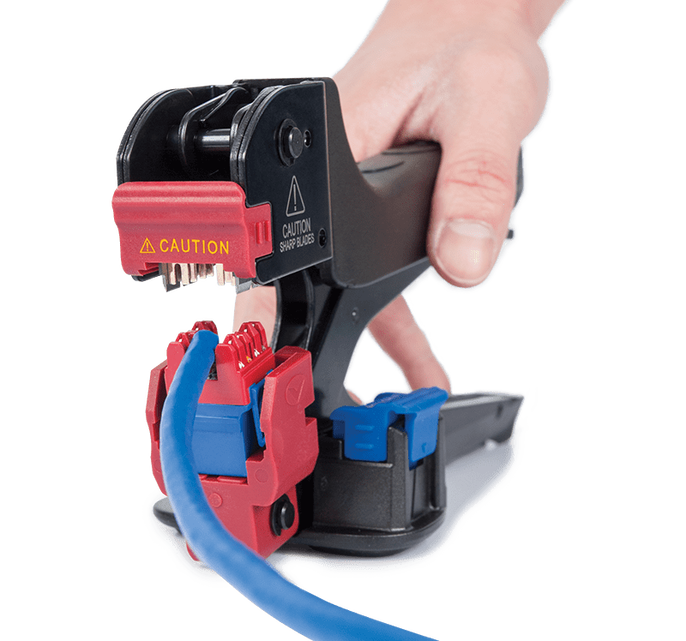
TIA® Component-rated
The Telecommunications Industry Association (TIA) Component rating is a much tougher standard to achieve than the Permanent Link rating. It means each component in the cabling system must pass a tougher standard, instead of relying on the entire cabling system to pass a lower standard. ICC Premise Cables, jacks, and patch panels have all been tested to meet and exceed the TIA Component rating standard.

